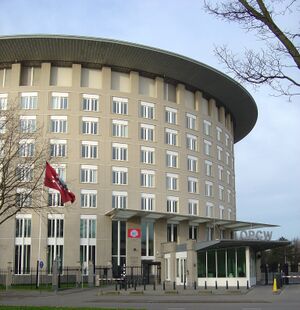Sekidean Council: Difference between revisions
mNo edit summary |
mNo edit summary |
||
| Line 63: | Line 63: | ||
'''Autonomy representatives''' | '''Autonomy representatives''' | ||
*{{color box|#DEDEDE}} ''Independent'' (9) | *{{color box|#DEDEDE}} ''Independent'' (9) | ||
**{{color box|#a62835}} Union of Autonomies (9) | **{{color box|#a62835}} [[Sekidean Tribunal|Union of Autonomies]] (9) | ||
| committees1 = | | committees1 = | ||
| house2 = | | house2 = | ||
Revision as of 15:35, 14 August 2022
Council of the Inner Sekidean Union | |
|---|---|
 Logo of the Sekidean Council | |
| Type | |
| Type | |
| Structure | |
| Seats | 36 |
 | |
Political groups | State representatives
Autonomy representatives
|
| Elections | |
| Indirect | |
| Meeting place | |
 | |
| Council building, Tropponz, Grad Autonomy, Zhousheng, Mustelaria | |
The Council of the Inner Sekidean Union, also known simply as the Sekidean Council is the upper house of the Sekidean Parliament, forming along with the Sekidean Assembly a bicameral legislature. It is created to represent the state legislatures and the regions and autonomies of the members of the Inner Sekidean Union.
History
The Sekidean Council was informally founded along with the foundation of the Sekidean Union in 1983, being the unofficial decisionmanking body cooperating with the Assembly's predecessor, until its legal setting in 1992, establishing the Sekidean Commission, Sekidean Tribunal of Regions and Autonomies and the Sekidean Council.
The Sekidean Council has the number equal to the members of the Sekidean Union, and representants were elected by the respective legislatures of the member states, while the Sekidean Commission was formed by the heads of government of the respective countries. The Sekidean Tribunal of Regions and Autonomies was an advisory body, that represented the interests of subnational units and autonomous regions of the member states. The first two of those three organs directly participated in the legislative process, with the Sekidean Commission proposing the laws, passing it down to the Sekidean Parliament, after which the Sekidean Council served as a sort of an upper house, that approved the laws passed by the two.
This laws became overly bureaucratic and in 2010, the decision was made to discontinue the system and combine the functions of the Sekidean Commission and the Sekidean Council into a single chamber and allow the Sekidean Assembly to propose its own legislature, which is then passed to the new unified body.
On January 1st, 2012, the Inner Sekidean Union was established and the new Sekidean Parliament became bicameral. The new Sekidean Council was established to be elected by 3/4 by the states' legislatures, while the remaining 1/4 has been left for the reformed Sekidean Tribunal of Regions and Autonomies to elect from their own, being known as the "Union of Autonomies".
Overview
The Sekidean Council is elected by the legislatures of member states. Each state sends three deputies, allowing for a representation of more than a single political view. Despite this, the Sekidean Council is defined to be strictly non-partisan. Organs voting in deputies are:
 Canton River Delta - The Blue Parliament
Canton River Delta - The Blue ParliamentHondonia - Vorbirea
 Kentalis - Estates-General
Kentalis - Estates-General Kistolia - Legislative Congress
Kistolia - Legislative Congress Mustelaria - Federal Council
Mustelaria - Federal Council Moldanovica - Parliament
Moldanovica - Parliament Prei Meas - United Chamber
Prei Meas - United Chamber Speke - Parliament
Speke - Parliament Torvon - Parliament
Torvon - Parliament
Outside of state legislatures, one quarter of the chamber (that means 1 seat for each member state) is reserved for nominations from the Sekidean Tribune, which serves as an advisory board, that represents autonomous and other sub-national entities. Although not specified by law or any regulation, it is generally assumed, that most of those seats would be reserved for people representing autonomies and other semi-autonomous regions, whose interests can not be sufficiently represented by the national delegates.
Appointment to the Council
Representants from each country are either replaced or reelected after a new government cabinet is formed, usually after a legislative election to a lower house of a national parliament. State legislature can replace a representant from the Sekidean Council by a simple majority, if at least two of the following conditions have been met:
- The Deputee is openly standing in opposition to the government of the country that nominated him
- The Deputee has violated a law set by the home country
- The Deputee has served for more than 5 years
- The Deputee has been nominated by a party, that does not participate in the government
- The Deputee did not show up for at least 5 meetings in a row
- The Deputee is incapable of carrying out the duty due to a boycott
- The Deputee is incapable of carrying out the duty due to an illness
- The Deputee has been reprimanded for misconduct by the Council
| Caucus | Group | Seats | Total | ||
|---|---|---|---|---|---|
| Member states | 3 | 27 | 36 | ||
| 3 | |||||
| 3 | |||||
| 3 | |||||
| 3 | |||||
| 3 | |||||
| 3 | |||||
| 3 | |||||
| 3 | |||||
| Autonomies | Union of Autonomies | 9 | |||
Legislative process
TBA